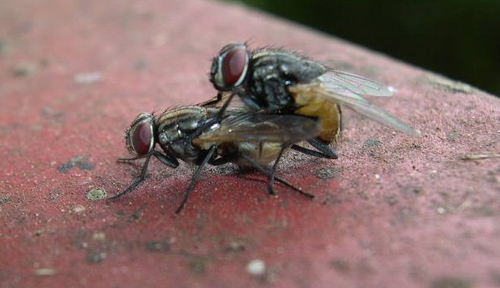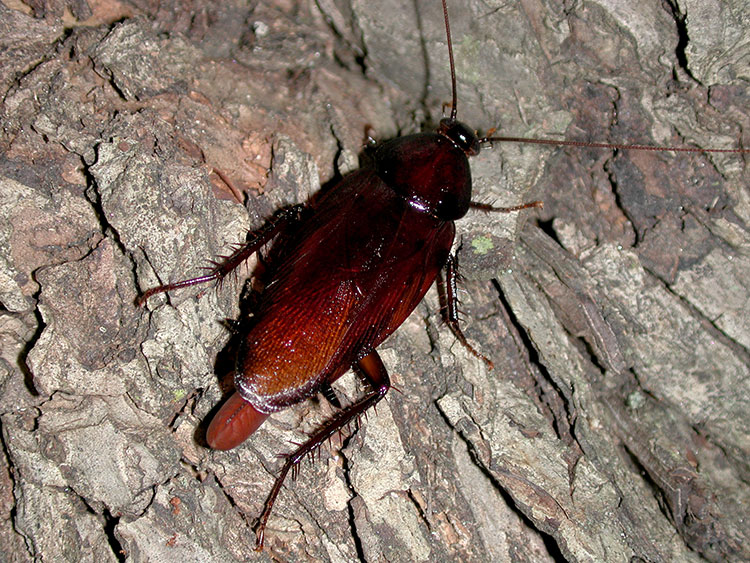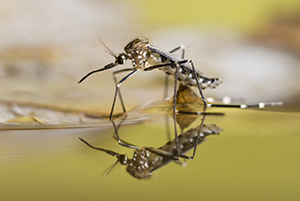There are more than 120,000 species of flies in the world. But when most people hear "fly," they think of the housefly. Wherever people are found, houseflies are there, too.

Volume XXXI |
Immature houseflies are called maggots. They live in moist, decaying, organic material, such as garbage or feces. When the larva pupates, it forms a hard outer pupal shell and becomes an adult within it.
In the warmth of summer, a housefly can complete its life cycle from egg to adult in about 10 days, with as many as a dozen generations per summer.
Once the adult fly emerges, it must feed and mate. Typically, an adult fly lives only a few days. In her lifetime, though, a female housefly can produce three or four batches of eggs, with more than 100 eggs per batch.
Whoa!
Theoretically, a single pair of houseflies mating in the spring could result in trillions of flies before the summer's end. Fortunately, diseases and predators prevent this potential from being realized.
Houseflies can't chew food, so they must spit on it to soften it before they sop it up. They also have a tendency to defecate while eating, so they're very good at contaminating food. Considering where flies come from, it's best not to let them walk around on our food.
Because they can spend the winter in buildings such as barns and garages, adult houseflies can be active on warm days even in winter.
When temperatures cool at night, flies become inactive and rest on overhead surfaces. Typically, they stay close to food and egg-laying sites such as garbage and manure.
While traps can catch a lot of flies and insecticides may kill a few, the best way to suppress them is to keep the maggots from becoming adult flies. Eliminating breeding sites is the only long-term strategy and requires good sanitation.
How to stop flies
So, clean up potential breeding areas and properly dispose of these materials. Seal garbage inside plastic trash bags to keep flies from having access.
Garbage cans and dumpsters should have tight-fitting lids and be cleaned regularly. They should be placed as far as possible from building entrances. You don't want to lure flies in so they hang out near the door and come inside when it's opened.
Because flies can't be completely eliminated, it's important to keep them out of our homes with screens and other methods.
Restaurants and warehouses sometimes use air curtains to create an airflow that keeps flies from flying in. Light traps can be used to catch those that manage to get inside.
Flies are so successful and prolific that the fight against them and the annoyance they cause is unlikely ever to be won. After all, as Ogden Nash reminded us, "God in his wisdom made the fly and then forgot to tell us why."








.jpg)